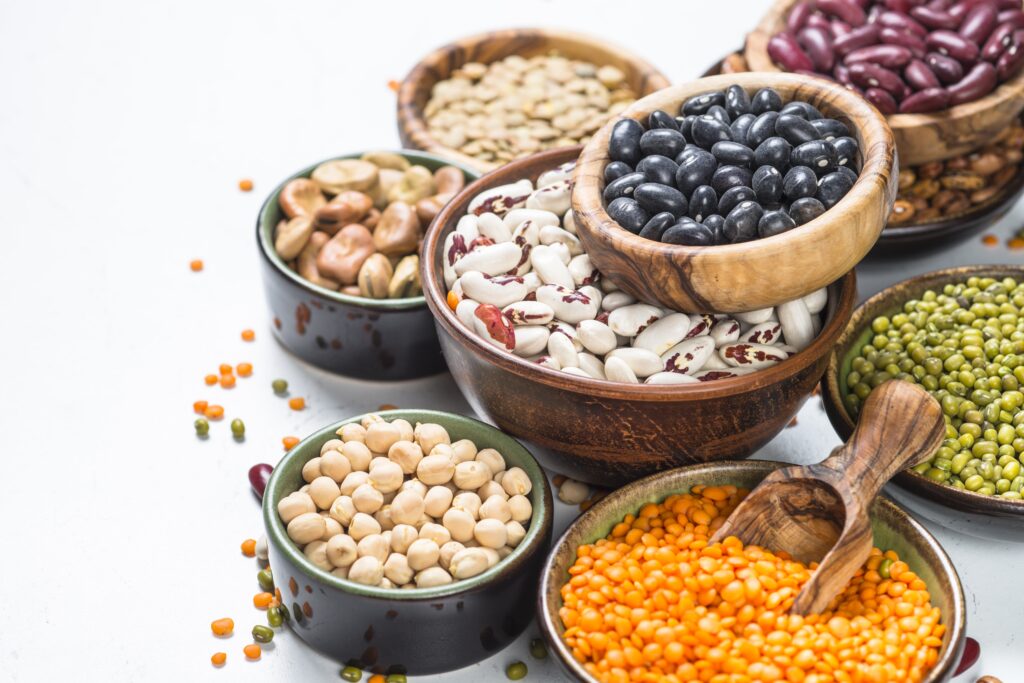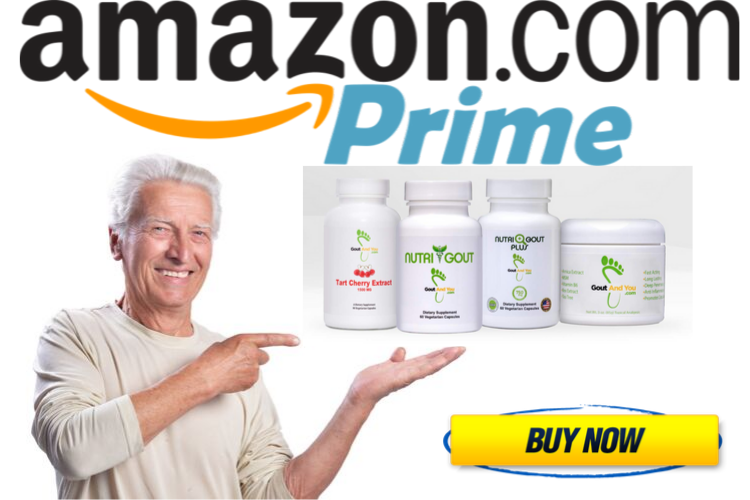When it comes to managing gout, beans can be an unexpected but valuable addition to your diet. These unassuming legumes offer a range of health benefits and can play a crucial role in alleviating gout symptoms.
In this article, we’ll explore how beans can become a supportive part of your gout management plan without delving into complex nutritional jargon.
The Disease of Kings
Gout might seem like a disease from the past, known for afflicting wealthy, overweight men. Even its name, “gout,” has an old-fashioned ring to it. The term originates from “gutta,” Latin for “drop,” a reference to the belief that it resulted from a slow accumulation of fluids in the joints, drop by drop.
Gout is still a concern, and its numbers are growing among Americans, partly due to the obesity problem. It mainly affects middle-aged and older men, but postmenopausal women are at risk too, possibly because they lack the protective effects of estrogen.
Gout, also known as the “disease of Kings,” is most common in overweight men who eat and drink heavily. It has also been linked to high blood pressure and kidney problems. Gout can be prevented and treated by changing your diet.
During gout flares, it’s usual to cut back on foods rich in purines. Purines turn into uric acid in the body. High uric acid levels in the blood raise the risk of gout. The foods highest in purines are organ meats and some small fish.
Plant-based diets generally don’t increase the risk of gout, even if they contain purine-rich plant foods. Plants usually have fewer purines than meat and seafood. Dairy products have low purine levels and don’t seem to increase gout risk.
However, choose low-fat or skim milk products to avoid potential issues with heart health and diabetes.
Debunking the Bean and Gout Myth
Many people think beans are high in purines and should be avoided if you’re at risk of gout, have high uric acid levels, or currently have gout.
This idea often comes from charts listing the purine content of foods, which typically show the amount of purines in 100 grams of dried beans (a bit over half a cup). But when you cook those 100 grams of beans, you get about 1 1/2 cups. A typical serving of cooked beans is just half a cup, so the numbers in these charts are three times the usual serving size. Using this smaller serving size, the purine content of beans usually falls between 20-75 mg.
Cracking the Basics of Beans
Beans are legumes, which are seeds from flowering plants of the Fabaceae family. Peas, peanuts, and lentils are examples of legumes that grow in pods or capsules from blooms. Beans can be purchased dry, tinned, or frozen.
It’s worth mentioning that they differ nutritionally from green beans or wax beans in that the entire pod is edible.
Beans are packed with amino acids, the body’s protein building blocks crucial for healing and tissue formation, including bone, muscle, hair, skin, and blood. Needless to say, protein is a must-have nutrient.
Beans come in many varieties. Dried beans need cooking to become tender, while canned and frozen beans are usually ready to eat after a quick heat on the stove or in the microwave.
Beans and Arthritis: A Connection
Arthritis is a significant health problem, impacting around 50 million people at some point in their lives. It increases the risk of chronic pain, limits daily activities, and can lead to depression. Some find relief through dietary changes, and beans could be a helpful option for those with arthritis.
Here are some of the most important benefits that beans can provide:
#1) Rich in proteins
Protein is a crucial nutrient that helps your body repair and maintain itself. When it comes to protein, beans stand out as an excellent source.
There are 20 different amino acids, with nine considered essential. Some foods, like meat, soy, and quinoa, are complete proteins, containing all nine essential amino acids. However, among beans, soybeans are the only ones that offer this complete package.
If you’re working with incomplete proteins like most beans, you can pair them with nuts, seeds, dairy, or grains to create complete protein-rich meals. For example, you can combine beans with rice or couscous or mix black beans with almonds or cheese. Now, if you’re looking for a special treat, how about vegetarian enchiladas with black beans?
Beans are particularly valuable for vegetarians and vegans as protein sources. What’s more, they’re lower in calories and saturated fat compared to some other protein options like meat or full-fat dairy products.
To put it in perspective, a one-cup serving of canned black beans (about 40 grams) delivers 14.5 grams of protein, a substantial 16.6 grams of fiber, and 4.56 milligrams of iron. Meanwhile, a one-cup serving of shelled edamame beans (around 155 grams) provides 18.5 grams of protein, 8.06 grams of fiber, and 3.52 milligrams of iron. Beans are a potent source of plant-based protein.
#2) A source of antioxidant magic
Research reveals that beans are a rich reservoir of polyphenols, a specific kind of antioxidant. Antioxidants act as your body’s protective shield, battling the detrimental effects of free radicals, those troublesome chemicals produced during metabolic processes and other bodily functions.
Free radicals have a knack for damaging cells, potentially leading to various diseases. But don’t worry; antioxidants step in to help the body eliminate these free radicals. This is how foods rich in antioxidants, such as beans, play a vital role in safeguarding the body from diseases.
#3) Folate
Beans are rich in essential nutrients, and one standout in their nutrient profile is folate. Folate is crucial for maintaining overall health, supporting the production of healthy red blood cells, and preventing neural tube defects in a developing fetus during pregnancy.
To put this into perspective, a one-cup serving of shelled edamame beans (approximately 155 grams) delivers a substantial 482 micrograms (mcg) of folate.
#4) Diabetes and glucose regulation
Beans have the potential to stabilize blood glucose levels and may even play a role in diabetes prevention. Their richness in fiber is a key player in this game, assisting in lowering blood glucose.
A 2018 review by an expert concluded that embracing a high-fiber diet could reduce the risk of type 2 diabetes. There’s also evidence suggesting that it can help regulate blood sugar in individuals already living with the condition.
In a separate study, researchers investigated the impact of adding a daily cup of legumes to the diet of individuals with type 2 diabetes. The results were promising, showcasing reduced blood sugar levels and lower blood pressure in the bean-eating group, outperforming the control group that incorporated more whole wheat fiber.
#5) A great way to help manage your appetite
When you munch on beans, their mix of fiber and healthy starches can leave you feeling full and satisfied. This isn’t just about a single meal; in the long run, it could help prevent overeating and support weight loss, as shown in a 2013 review.
Recent research also tells us that beans, peas, chickpeas, and lentils packed with viscous fiber can amp up that fullness feeling by a whopping 31%, when compared to meals without beans. Don’t forget, fiber-rich whole grains can also help you beat those hunger pangs.
#6) Vegan and gluten-free diet for arthritis relief
A study published in the October 2001 issue of “Rheumatology” revealed that a vegan diet free of gluten can make a meaningful difference in alleviating arthritis symptoms for certain individuals. Beans shine as a top choice for a vegan diet, as they offer essential dietary protein and iron – two nutrients often deficient in many vegan eating plans.
#7) Boosting gut health with beans
Extensive research has demonstrated the remarkable gut-enhancing potential of beans, with black beans standing out as a star player. They contribute to improved intestinal barrier function and foster the growth of beneficial bacteria, which can act as a shield against gut-related ailments.
Not only that, but these helpful gut bacteria are your immune system’s cheerleaders, and they might even lend a hand in your weight loss journey. And guess what? Beans serve as a gourmet meal for these beneficial bacteria colonies. So, a bowl of beans today might just keep the doctor away tomorrow.
#8) Guarding your liver against fat buildup
Fatty liver, a condition where fats accumulate in the liver, often tags along with obesity, high cholesterol, high blood pressure, and other facets of metabolic syndrome.
To tackle fatty liver disease, doctors emphasize weight loss and the management of blood sugar levels. Additionally, they aim to lower fat levels in the bloodstream, including triglycerides and LDL, often referred to as “bad” cholesterol.
One practical strategy for improving liver health is swapping out higher-fat animal proteins for beans. This shift can make a significant difference in safeguarding your liver from fat buildup.
Conclusion
In conclusion, black beans stand as a valuable addition to the diet of individuals dealing with gout. Their potential to reduce purine intake, provide essential nutrients, and support overall health can be a smart and flavorful choice. Whether you’re whipping up a hearty stew or a zesty salad, consider incorporating these little powerhouses into your meals as part of your gout management strategy. With their array of benefits, black beans are not just delicious; they’re a promising ally in the fight against gout.




